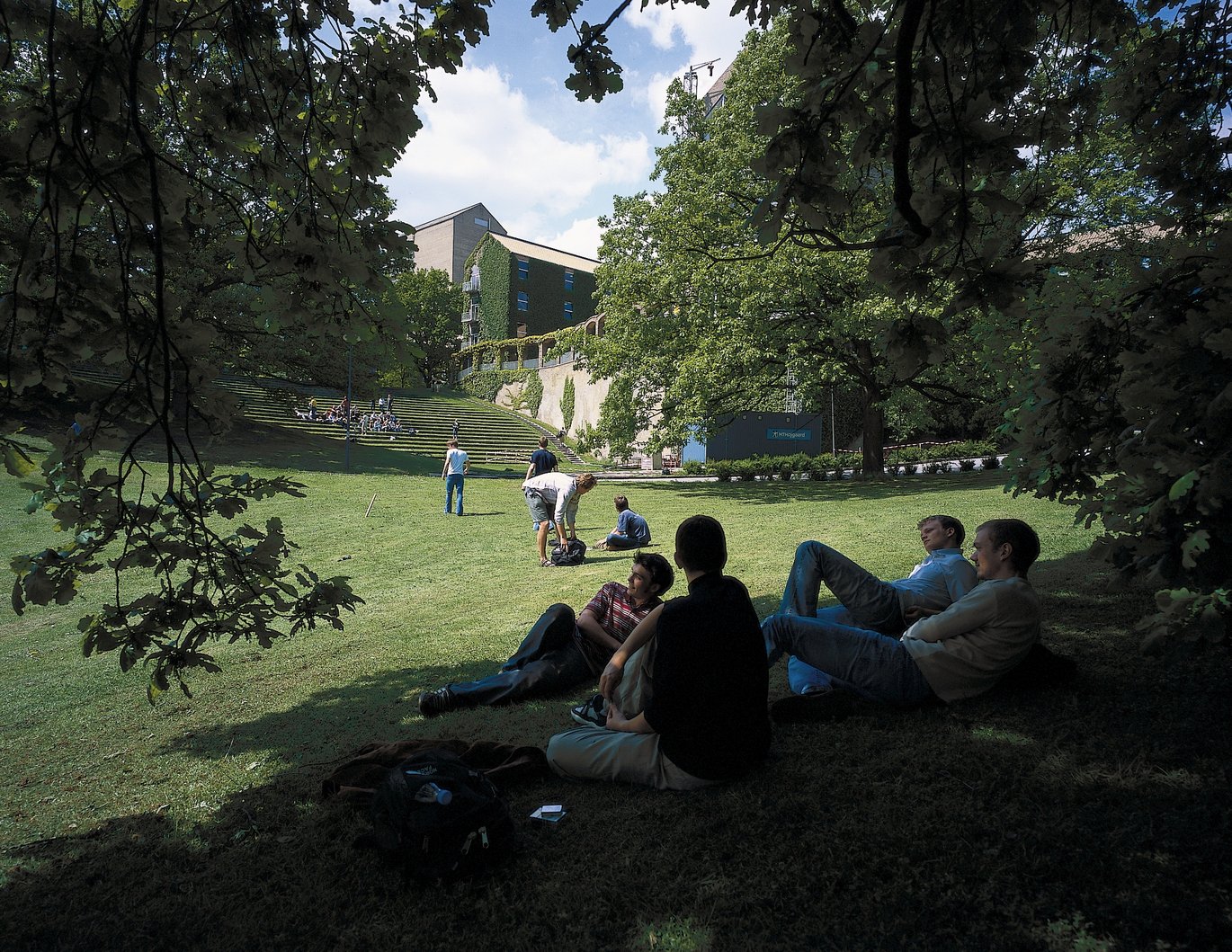7,383 new students have been offered a place at AU: The foreign language programmes are still struggling – while programmes taught in English have grown
AU increased the number of student places available in this year’s round of admissions, and has seen an increase in applications to programmes taught in English and engineering. But the downward trend in admissions to foreign language programmes has continued. Nation-wide, 61,382 applicants to higher-education institutions were offered a student place.

On Thursday evening, the good news that they’d been accepted to AU ticked in to the e-Boks of 7,282 hopeful applicants. That’s an increase of four per cent over last year, and more than in 2019, the last ‘normal’ year before the Covid-19 lockdowns led to a spike in applications that makes comparison difficult.
Nation-wide, 61,382 applicants to higher-education institutions were offered a student place: 27,745 were admitted to university BA/BSc programmes, 23,340 to professional BA/BSc programmes and 10,297 to AP degree programmes. While total admissions increased over 2022, they were still lower by 4000 places than in 2019. While AU has offered 270 more applicants places this year compared to last year, the increase was more modest elsewhere; for example, the University of Copenhagen offered only 29 more students a place compared to last year.
FOREIGN LANGUAGE PROGRAMMES CONTINUE TO SHRINK
One trend that has not changed this year is the downward slide of applications to foreign language programmes. Just like last year, applications to all 12 of the university’s language programmes fell compared to 2019, with the exception of Japan Studies.
The programmes that received fewer applications were: Arab and Islamic Studies; Brazilian Studies; English; French Language, Literature and Culture; South Asia Studies; China Studies; Scandinavian Languages and Literature; Russian Studies; Spanish and Latin American Languages, Literature and Culture; and German Language Literature and Culture.
For example, there were 69 applicants to the Russian Studies programme in 2019, 31 of whom were offered a place. This year, there were just 29 applicants, ten of whom were admitted. Arab and Islamic studies offered places to 38 out of a total of 89 applicants in 2019. This year, 12 out of a total of 40 applicants were admitted.
Taken as a whole, applications to foreign language programmes at AU fell by 33 per cent over 2019 this year. As Pro-Rector Berit Eika states in an article on au.dk, this development is deeply problematic – and not just for AU:
“This trend means that both the public and private sector will soon find it difficult to recruit employees with language and language-cultural competencies. This poses a major challenge to both society and the business community, who require language specialists – both now and in the future.”
A POSITIVE DEVELOPMENT: INCREASED ADMISSIONS TO ENGINEERING AND IT PROGRAMMES
On the bright side, this year saw an increase in admissions to IT and engineering programmes, both nationally and at AU, where the number of places offered has also grown.
Pro-rector Berit Eika is positive about the rising interest in engineering and IT subjects among the young, she said. Minister for Higher Education and Science Christina Egelund agrees, as she states in a press release from the ministry about the increase in admissions:
“In particular, the increase in IT and engineering programmes is positive. There is a huge demand for skilled engineers and IT specialists in Denmark.”
Admissions by faculty
- Arts: 1,919 applicants have been offered a place: No change compared to 2022 and 8% fewer than in 2019.
- Aarhus BSS: 2,512 applicants have been offered a place: Five per cent more than in 2022 and 4% more than in 2019
- Natural Sciences: 786 applicants have been offered a place: Two per cent fewer than in 2022 and 4% fewer than in 2019
- Health: 965 applicants have been offered a place: This is 10% more than in 2022 and 11% more than in 2019
- Technical Sciences: 1,201 applicants have been offered a place: Five per cent more than in 2022 and 28% more than in 2019
Source: au.dk.
INCREASE IN APPLICATIONS TO DEGREE PROGRAMMES TAUGHT IN ENGLISH
AU’s degree programmes taught in English are also expanding, in line with the nation-wide trend at Danish universities.
For example, the Economics and Business Administration programme at Aarhus BSS, which has offered 277 applicants a place. That’s 37 more than last year and 46 more than in 2019. Cognitive Science, which offered 85 applicants places this year, has also increased admissions, by 29% over 2019 and 5% over last year.
Danish companies have been pushing for increased access to well-educated international workers for a number of years and their interests are also reflected in the government’s recent reform of Master’s degree programmes, which earmarks funding for even more international student places at Danish universities.
ARTS AND NAT LOSE GROUND
If we take a closer look at the individual faculties, only Arts and Natural Sciences have offered fewer places this year than in 2019 and 2022, the most relevant years for purposes of comparison. Admissions figures at Arts are virtually unchanged compared to last year; compared to 2019, nine per cent fewer student places were offered. The Faculty of Natural Sciences offered four per cent fewer students a place than in 2022, and four per cent fewer than in 2019.
Aarhus BSS offered five per cent more student places than in 2022 and four per cent more than in 2019. At Health, the increase was 10 per cent over 2022 and 11 per cent over 2019. The greatest increase in student places has occurred at Technical Sciences, which offered 28 per cent more places this year than in 2019 and eight per cent more than last year.
Translated by Lenore Messick.

